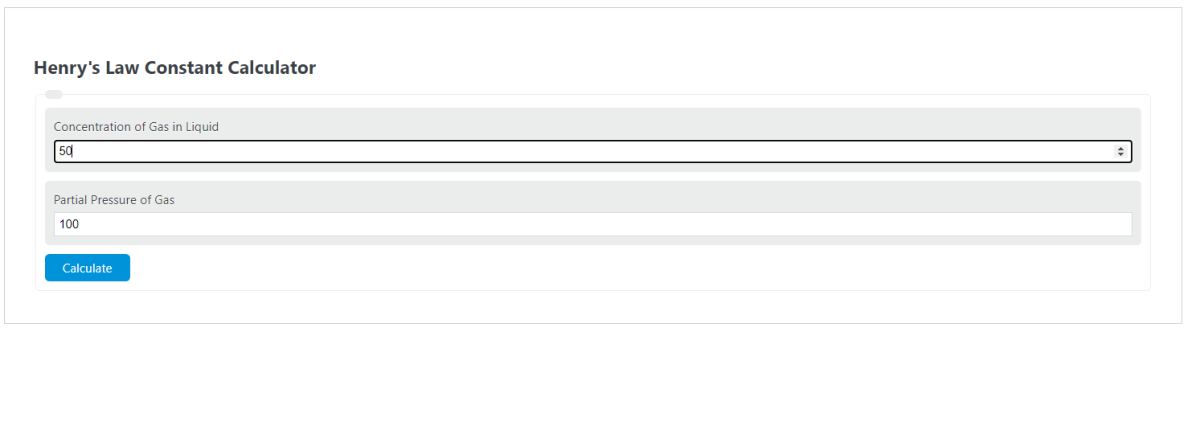Enter the concentration of dissolved gas and the partial pressure of the grass into the calculator to determine Henry’s Law Constant.
- K Value Calculator
- Partial Pressure Calculator
- Vapor Pressure Calculator (Solvent/Solution)
- Gas Velocity Calculator
Henry’s Law Constant Formula
The following formula is used to calculate Henry’s Law constant.
k = C / P
- Where k is Henry’s Law Constant
- C is the concentration of a dissolved gas
- P is the partial pressure of the gas
To calculate Henry’s Law Constant, divide the concentration of the dissolved gas by the partial pressure of the gas.
What is Henry’s Law Constant?
Definition:
Henry’s Law Constant is a law used in physics that states that the amount of gas that dissolves into a liquid is directly proportional to the partial pressure of the gas above the liquid.
How to calculate Henry’s Law Constant?
Example Problem:
The following example outlines how to calculate Henry’s Law Constant.
First, determine the concentration of the dissolved gas in the liquid. In this case, the concentration is 25 M.
Next, determine the partial pressure of the gas above the liquid. In this example, the partial pressure is 50 ATM.
Finally, calculate the Henry’s Law Constant using the formula above:
k = C / P
k = 25M / 50 ATM
k = .50 M/ATM
